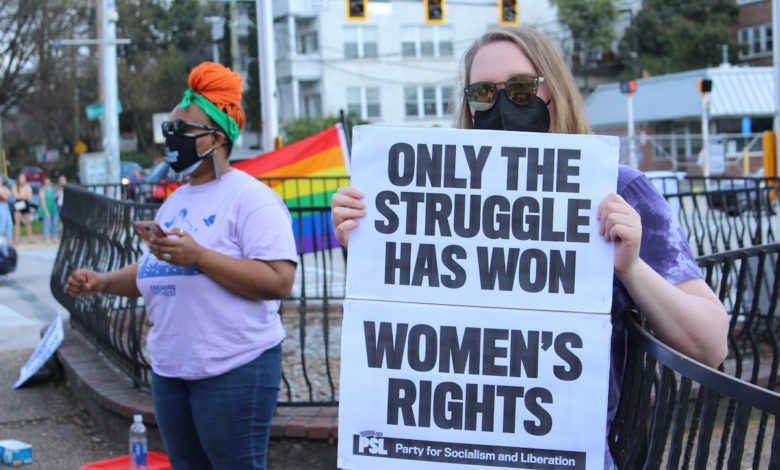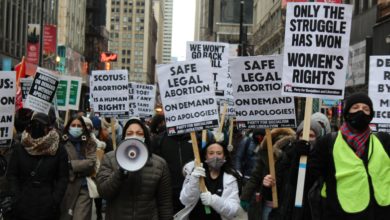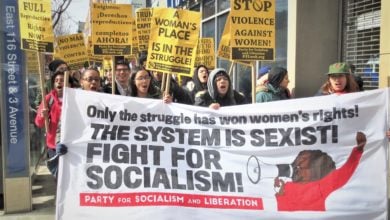
Abortion providers and advocates warned far in advance of the overturn of Roe v. Wade that the impact of abortion bans across the United States would be wide-reaching and needlessly cruel. Hundreds of pregnant children are already suffering serious consequences less than two months after Roe’s overturn.
The viral story of a 10-year-old girl and rape victim in Ohio, who was denied an abortion in her home state and had to cross state lines in search of one, seemed so outrageous at first that many people denied its legitimacy. But more and more stories are emerging that showcase a disturbing pattern. Very, very young children, most considered under the age of sexual consent, are at any time in need of abortion services. Where and how will they now get them now?
The collective imagination of the United States expects that child rape victims are incredibly rare and that most underage abortions are performed on reckless older teenagers who engage in unprotected sex. Statistics paint a different picture. In 2017, the last year in which data on the subject is available, there were almost 4,500 pregnancies in girls under the age of 15 in the United States. This number is actually down from prior years due to increased contraceptive access — which the rightwing is also targeting — and an overall decline in youth sexual activity. Of those pregnancies, almost half ended in induced abortion.
In 2021 in Texas alone, over 200 children aged 15-or-younger received abortions. That state now has one of the country’s strictest bans. As of this writing, nearly a dozen U.S. states completely prohibit abortion even in cases of rape or incest, which only doubles the hardship on children, the group whose pregnancy is most likely to be due to rape or incest. Additional requirements in some states, such as proof that a rape accusation was filed with the police and parental consent for abortion, also complicate the process. This was not unforeseen. So-called “pro-life” forces simply ignored such statistics, treating these brutal consequences to the most vulnerable age group as collateral damage rather than an integral feature of abortion bans.
Increase in births will not bring increases in aid
The true colors of the “pro-life” movement and its “concern for children” are revealed by the complete failure of conservative state governments to provide any aid to ease the financial burdens to the expected increased numbers of mothers and babies. Democrats recently proposed expanding Medicaid insurance to new mothers for an entire year after the birth of their baby — a meager but celebrated attempt to confront the U.S.’s maternal mortality rate, the highest in the developed world. Republican legislatures in Mississippi, Texas, Wyoming, Florida, Tennessee and twelve more states shot down the proposal.
According to Maya Wiley, president of the Leadership Conference on Civil and Human Rights in Washington, D.C., that means 800,000 women may be left without health care in the first year of their newborn’s life, some of which will be forced births. Of those 800,000, about two-thirds are Black or Latina. In addition to the impact on the youngest pregnant people, this is another indication that abortion bans and other attacks on reproductive rights target most severely society’s most marginalized and vulnerable groups.
Majority support abortion rights
The cruelty that these abortion bans impose is certainly not something that any working person voted for. For decades, public opinion polls have indicated that the majority of the U.S. population in any given year has supported accessible abortion at least in cases of incest, rape and various other circumstances. The far right chose to circumvent the popular will by pursuing the bans seen today through the avenue of the Supreme Court, the single most powerful unelected body in the United States. Even while protesters camped outside of Justice Brett Kavanaugh’s house to oppose the severity of banning abortion, the majority of Supreme Court justices signed off on this incredibly dangerous ruling, fully aware that it is unpopular and will certainly lead to hundreds of deaths.
Meanwhile, the ramifications of abortion bans brought health care professionals into the pro-abortion movement. OB-GYNs and other health care specialists — many of whom have never been politically active before — are using their medical backgrounds and their knowledge that abortion is indeed health care to advocate for abortion rights in political action committees, to state officials and to launch web-based campaigns against abortion restrictions. Some states, such as Indiana and West Virginia, have seen small wins on this front, such as securing abortion access for “exception cases” like rape and abuse.
The situation faced today is the result of a tiny, well-funded ultra right-wing minority spending decades rallying their base. Every day the unconscionable effects of the rightwing’s abortion ban become more visible. It amounts to a war on women, reproductive care, Black and Brown people, the LGBTQ community and the working class as a whole.
The majority of people living within the United States stand with abortion rights and reproductive freedom. It is only a matter of time before the challenges imposed by the ban become too heavy to ignore, stirring even those who have never considered themselves “political” into action. The working class will surely take back its right to abortion, health care, bodily autonomy and freedom.






